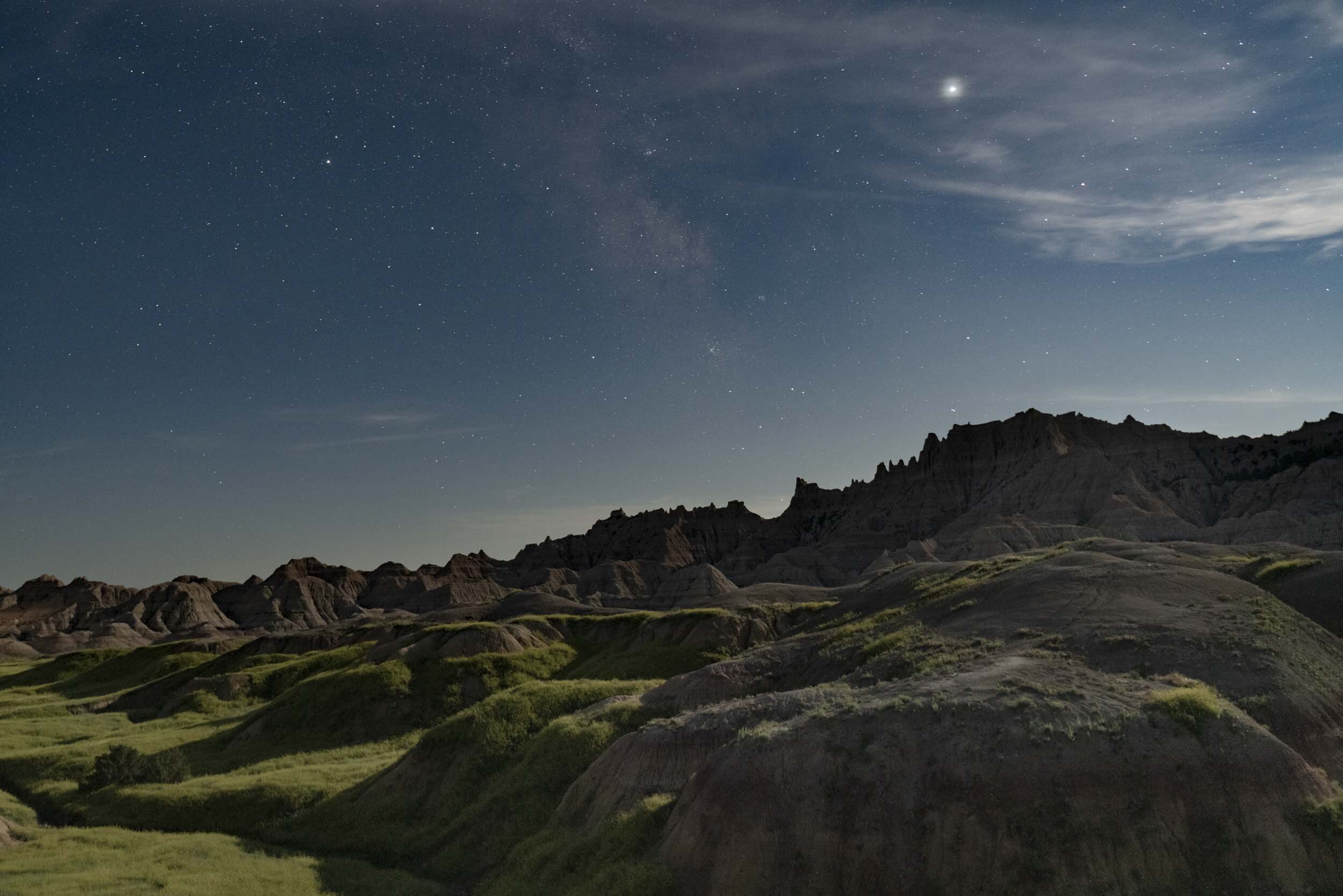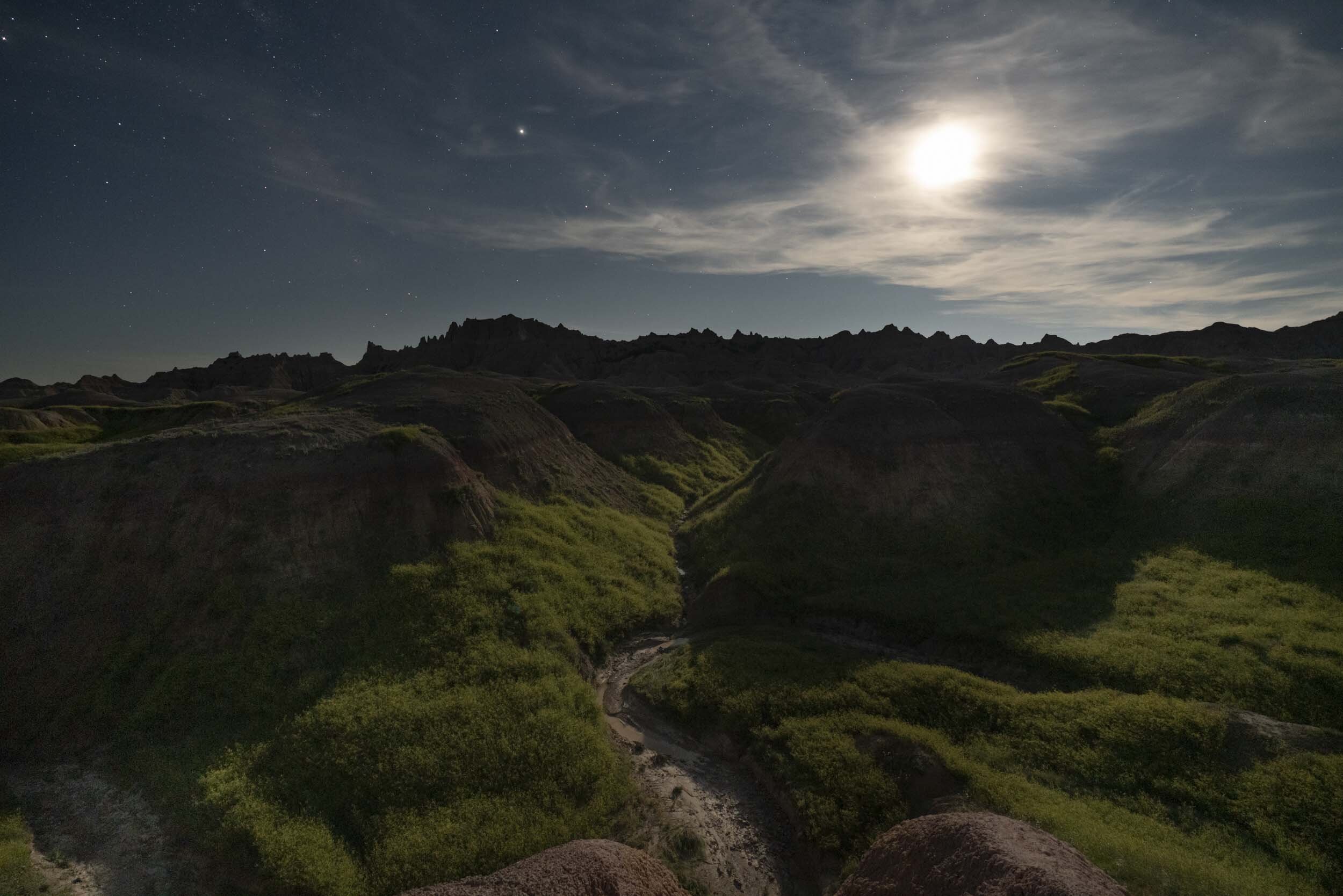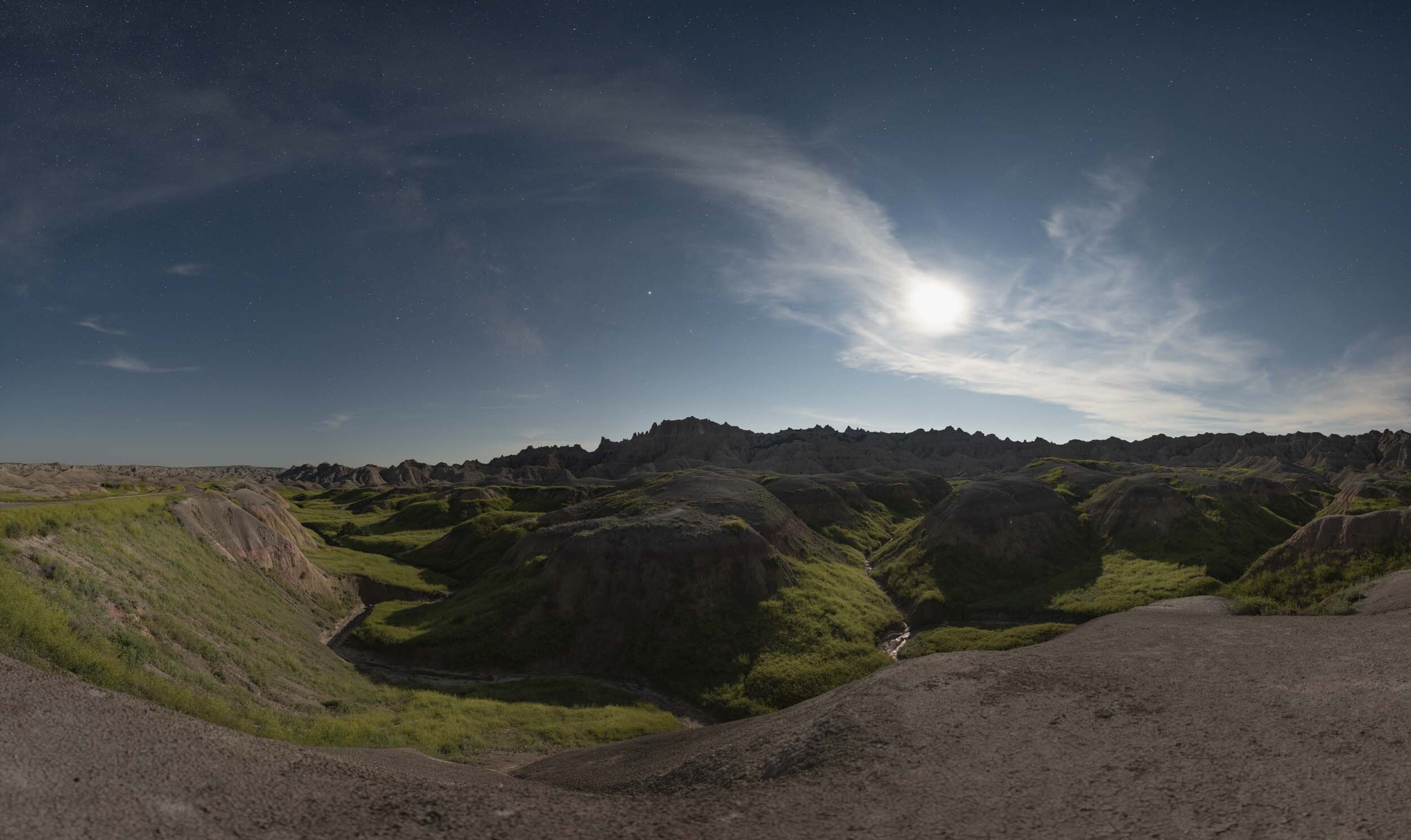Most of my astro photography field trips are designed around the time of a new moon, so I can capture the galactic center of the Milky Way at it’s peak in clarity, but sometimes I just need to get out there when I have time. New moon or not.
Badlands National Park is about 7 hours from my house, which I consider a short drive, so I go there as often as possible. I absolutely love everything about this place. If you avoid the peak of summer and go any other time, there is an abundance of solitude. Even in the middle of summer, you can experience incredible moments if you head out before or after the sun. The columns and rock formations change drastically throughout the day as the shadows move and constantly change the hue and texture of the rocks. Layers and layers of color, form, and history that still continue to evolve every single day.
During my first quarter at Brooks Institute of Photography, I had this really cool assignment to photograph the exact same place over a 12 hour period. I chose this cool little block in Ventura that dead-ended at the ocean. I hung out there all day- before sunrise to after sunset- just watching and observing…and then occasionally I would take a picture. The point was to observe how lighting at different times changed the scene. Up to this point in my photo career, I definitely scouted places and chose perfect times to get the best shot, but I had never just sat in one place and watched the slow changes happen over long periods of time.
There were busy moments and quiet moments. And in between moments. It was the quiet moments that helped me grow as a photographer that day. I listened to the seagulls flying out to sea. I smelled tacos being made across the street at Tacos and Beer (one of my favorite places for a snack!). I simultaneously felt the cool breeze and the warm sun on my neck. I tried to just be a part of this place, working on a time frame other than my own. It became much more than a school assignment. It became a methodology that I try to always employ when I arrive at a place where I want to create an image. I slow down, take in everything. Sometimes, the best image is not the most obvious one. Every scene has hundreds if not thousands of image possibilities. I have found that if I slow down and just observe, those images begin to jump out at me. And the longer I’m there, the more I gain from the experience.
I arrived at the north east entrance to the park about and hour before sunset on a gorgeous summer evening. I had scouted a couple of locations about a month earlier so I had pretty good idea on where I wanted to work that night. I drove to both of them and then, shot a few images of the sunset along the way, and then settled on the first location for my home base that night. It felt right and I liked the way the foreground and background worked together. I calculated where the moon and the milky way would be in the scene. In my mind, it all worked well together.
I sat on top of a great valley and just watched as the day transitioned to night. Under the light of the moon and the stars, the world was mostly quiet. Except for some ambiguous movement here and there. I could definitely hear something moving around below me...but couldn't see anything. The mosquitoes were really bad that night. Really bad. So I could definitely hear them. But everything else was so incredibly perfect, so I just put up with it. I resigned to the fact that I would itch like crazy tomorrow, so I just focused on enjoying that moment out there as much as I possibly could. And that is one of the main reasons why I love photographing the night sky so much. For me, it’s equally as important to just be there as it is to get an amazing image. To just be still and quiet and be alone with my thoughts. To be outside in a beautiful place. To breathe deeply and take stock in all the blessings I have in life.
I waited for the moon to set behind some far off formations on the right side of my frame and then just watched and waited for the Milky Way to brighten up. At this point, I had been in the same spot about 4 hours…maybe a little more. I felt refreshed AND happy about the images I had created. And most importantly, I loved my time in that space. I decided it was time to move down the road a little bit. I drove for about 2 or 3 miles and then stopped again at a spot with incredible formations pretty close to the road. The Milky Way was super intense at this point because the moon had completely set. I worked a little more until I felt I should get some rest before sunrise. A couple of hours later, I watched the sun come up and then hit the road.










